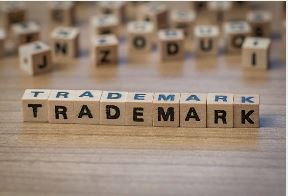Protection of Trademarks in Singapore
Introduction
The objective of the Singapore Treaty is to create a modern and dynamic international framework for the harmonization of administrative trademark registration procedures. Building on the Trademark Law Treaty of 1994, the Singapore Treaty has a wider scope of application and addresses more recent developments in the field of communication technologies. The Singapore Treaty is applicable to all types of marks registrable under the law of a given Contracting Party. Contracting Parties are free to choose the means of communication with their offices (including communications in electronic form or by electronic means of transmittal). Relief measures in respect of time limits as well as provisions on the recording of trademark licenses were introduced, and an Assembly of the Contracting Parties established. However, other provisions of the Singapore Treaty (such as the requirements to provide for multiclass applications and registrations and the use of the International closely follow the TLT.

Unlike the TLT, the Singapore Treaty applies generally to all marks that can be registered under the law of a Contracting Party. Most significantly, it is the first international instrument dealing with trademark law to explicitly recognize non-traditional marks. The Treaty is applicable to all types of marks, including non-traditional visible marks, such as holograms, three-dimensional marks, colour, position and movement marks, as well as non-visible marks such as sound, olfactory or taste and feel marks. The Regulations Under the Singapore Treaty on the Law of Trademarks provide for the mode of representation of these marks in applications, which may include non-graphic or photographic reproductions.
The Singapore Treaty leaves Contracting Parties the freedom to choose the form and means of transmittal of communications and whether to accept communications on paper, in electronic form or in another form. This has consequences on formal requirements for applications and requests, such as the signature on communications with the office. The Treaty maintains a very important provision of the TLT, namely that the authentication, certification or attestation of any signature on paper communications cannot be required. However, Contracting Parties are free to determine whether and how they wish to implement a system of authentication of electronic communications.
In terms of IP protection, Singapore is ranked second in the world and first in Asia in the World Economic Forum’s Global Competitiveness Report 2019.This is surely of interest to many multinational corporations seeking to protect their IP in Asia. Singapore was also ranked third in the International Property Rights Index 2020. In fact, approximately 53,000 trademark classes were filed in Singapore in the year 2020 alone, which goes to show how robust the trademark regime is there.
Singapore is a party to the Madrid Protocol, the Paris Convention, and a member of the World Trade Organization. Foreign applicants will appreciate the ease in which they may file for trademark rights in Singapore, whether they designate Singapore as a contracting party through a Madrid Protocol application, or whether they file their trademark nationally with a priority claim. Approximately half of the trademark applications in the year 2020 were filed nationally, with the other half filed under the Madrid Protocol.
Singapore has a very efficient trademark process. In the case of a straightforward trademark application without any deficiencies or objections, you may expect to receive the certificate of registration within six to nine months.
The protection of trademarks under Singapore’s Trade Marks Act is territorial. This basically means it is only effective within Singapore. If an individual or company wants to register their trademark in another country, they will have to do it in those countries or they can proceed with an international registration through the Madrid Protocol. Even so, this won’t be much of a problem because Singapore is already a contracting country of the Madrid Protocol.
A registered trademark is considered valid for 10 years. It can also be renewed for another 10 years, as long as the owner is able to file for a renewal before the initial 10-year period ends.
Singapore has invested heavily in alternative dispute resolution for IP. The WIPO Arbitration and Mediation Centre has an office in Singapore, its only other office besides Geneva. The Singapore International Arbitration Centre also offers a specialist panel of IP arbitrators. Singapore was ranked the third most preferred seat of arbitration in the world in the 2018 International Arbitration Survey, conducted by Queen Mary University of London in partnership with White & Case.
Singapore’s IP litigation landscape is equally robust. An Intellectual Property Court has been established in the Supreme Court, with specialist judges on its IP / IT list to adjudicate IP / IT cases. A “fast track” option for IP litigation is also being discussed, which, if implemented, will result in time and cost savings for trademark owners.
Conclusion
In conclusion, Singapore’s status as an IP hub in Asia makes Singapore a key jurisdiction for any corporations seeking to break into the Asian market. With its proximity to the rest of Asia, strong rule of law, and robust IP dispute resolution regime, Singapore remains a choice destination for multi-national corporations for their Asia headquarters. Singapore’s trademark protection is actually one of the world’s most persistent enforcement systems. This stems from the government’s efforts to encourage people to develop and register their own marks and intellectual properties. They do this by providing monetary incentives and even tax deductions. They, for instance, give grants to small companies that are able to develop and register intellectual property. Given that, they provide strict legal frameworks to protect registered trademarks. There has even been a specialized IP court created in 2002 just to handle the increasing IP cases.
Author: Tanya Saraswat, in case of any queries please contact/write back to us at support@ipandlegalfilings.com or IP & Legal Filing.


